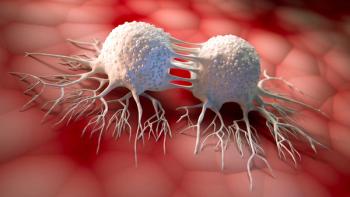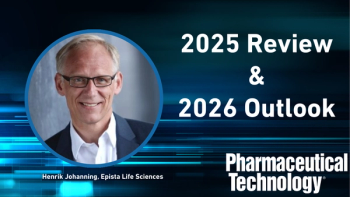
- Pharmaceutical Technology-09-02-2015
- Volume 39
- Issue 9
Cleaning a Vial Filling Line
Operator attention to detail and adherence to procedures are crucial for proper cleaning.
Appropriate cleaning procedures are crucial for any cGMP aseptic or sterile manufacturing process, including vial filling. In addition to having procedures, the operators on the line who are performing cleaning tasks must understand the procedures, grasp the importance of their tasks, and do their jobs well.
Grand River Aseptic Manufacturing (GRAM), a parenteral contract manufacturer, operates cGMP aseptic and sterile vial-filling lines for both liquids and lyophilized drug products at two facilities in Grand Rapids, MI. Alex Fox, an experienced operator, and Jason Steele, operations liaison, both at GRAM, spoke to Pharmaceutical Technology about the challenges and best practices in cleaning a manufacturing facility and a vial-filling line in particular.
Cleaning best practicesPharmTech: What are important aspects of and best practices for cleaning in a pharmaceutical manufacturing facility?
GRAM: Strict adherence to standard operating procedures (SOPs) and a training program are crucial. SOPs are in place so that different operators can complete a task in a consistent manner. FDA expects written SOPs detailing the cleaning process. GRAM's SOPs outline each step so that personnel can synchronize and work as a team. A robust training program is required so that operators understand the importance of following procedures as well as the importance of keeping the facility clean.
In addition, it is crucial to document all activities for cleaning. Lack of documentation or documentation errors can potentially create equipment downtime and negatively impact efficiency.
All personnel must understand why cleaning the facility in the correct order is a best practice. Personnel must first clean the more strictly controlled cleanrooms, which have a higher classification, before proceeding to rooms of lower classification. Cleaning in the incorrect order can be a significant risk to sterility assurance and may create cross-contamination between classified areas.
Attention to detail and ensuring that sufficient time is allotted for cleaning to be a priority are also important. Cleaning should never fall behind due to other tasks, and its importance in aseptic operations should never be understated. Although cleaning can be mundane, extreme focus is necessary for cleaning to be completed correctly in pharmaceutical facilities.
Cleaning between productsPharmTech: What are the key steps to cleaning a vial-filling line when changing from one product to another?
GRAM: Performing a post-fill cleaning of the line immediately after a fill is completed is crucial because it ensures that the product does not become dried onto the line. It is also important to ensure that the appropriate cleaning methods and tools are used so that no product is left after cleaning is completed. Different products may require different procedures.
Proper disposal of any and all rejects, tailings, and any other drug product left in the room is crucial when changing from product to product. An operator must ensure that all substance is removed appropriately. Proper disposal ensures cleanliness and operator safety.
Another tip is to begin with the cleanest equipment and move to the dirtiest area within a room. For example, begin with the fill line and, subsequently, the inside and then outside of a restricted access barrier system (RABS) if applicable, followed by the ceiling, walls, and floors.
To have the room released for the next fill or client, an operator’s top priority must be proper line clearance by removing previous product and cleaning equipment. An operator must remember that cleaning the equipment and removing all drug substances are both equally important when preparing to switch between products.
Cleaning validationPharmTech: What are some of the challenging aspects of cleaning validation for a vial-filling line, and what are the best practices to solve these challenges?
GRAM: A challenge is the time and resources required to perform the cleaning validation for a vial-filling line. It is important to optimize procedures and the use of resources, as well as to stay up to date with any new trends in the validation sphere. For example, GRAM is implementing disposable equipment, which can reduce cleaning and cleaning validation requirements.
Ensuring aseptic processing conditionsPharmTech: In addition to cleaning and cleaning validation, what else is crucial to ensuring aseptic processing?
GRAM: It is also important to have qualified sterilization methods for bringing components, materials, and equipment into the cleanroom. Autoclaving all components and equipment allowed in the cleanroom, for example, is a straightforward method.
At GRAM, we believe that the following are crucial to ensure aseptic processing:
- Proper training. The manufacturing crew must be trained, qualified, and most importantly, be comfortable in gowning, personnel monitoring, environmental monitoring, and aseptic interventions.
- Personnel working together. At GRAM, we make sure that our manufacturing crew and quality assurance (QA) team operate as a unit in the aseptic processing areas.
- Continuous improvement. The manufacturing and QA crew participate in 'lessons learned' sessions to review batch trending, for example; the ideas discussed in these sessions have been implemented, resulting in improvements and greater efficiency.
Article DetailsPharmaceutical Technology
Vol. 39, No. 9
Page: 58
Citation: When referring to this article, please cite it as J. Markarian, “Cleaning a Vial Filling Line,” Pharmaceutical Technology39 (9) 2015.
Articles in this issue
over 10 years ago
Generating Savings from Room Declassificationover 10 years ago
Establishing Limits for Dermal Absorption of Elemental Impuritiesover 10 years ago
A Matter of Tasteover 10 years ago
CMOs Concerned With Cost of Single-Use Equipmentover 10 years ago
Manufacturers Face Key Policy and Regulatory Challengesover 10 years ago
Getting Flexible with Manufacturingover 10 years ago
Computerized Systems Validationover 10 years ago
Collaborating on GMP Inspectionsover 10 years ago
Going Low Temperatureover 10 years ago
Industry Expert Q&A with Robin M. SilvaNewsletter
Get the essential updates shaping the future of pharma manufacturing and compliance—subscribe today to Pharmaceutical Technology and never miss a breakthrough.




